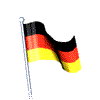 |
 |
 |

From Scandinavia, we took the boat to Kiel, in Germany, through the Kiel Canal to the Elbe River, and on to the North Sea. Along the way, we saw and toured some of Germany's towns and the city of Kiel. Kiel itself is rather industrial and was a major military port during World War II. About 80% of the city was destroyed during the war. Like other European cities, Kiel has pedestrian-only shopping streets and a compact city center, including a great marine store for Art to browse.
|
The German Naval Memorial is in Laboe, just across from Kiel. This museum's original mission was to commemorate those seaman from the Kaiser's navy who died at sea during the first World War. Its dedication is now extended to German seaman killed in both World Wars, and pays respect to victims of their naval allies and to their dead enemies. Over the years the memorial has come to be an international venue to commemorate all those who have died at sea, and a symbol to hope for peaceful navigation in free waters for all. The grounds include:
|
|
Here is the Kiel entrance to the lock into the canal. We thought we'd get an early start, arriving at about 6:15 AM. The first opening didn't occur until nearly an hour later. On the other end, in Brunsbüttel, we decided to go with the flow and go through no sooner than 7:00, once we'd seen other boats leave earlier. This time we still waited at least an hour. You can see the red signs telling us that we cannot go in yet. |
|
|
|
We were intrigued by the look of this roof, made of reeds. This type of roof is a fairly common sight in the places we toured in Denmark. The one in this picture is in Brunsbüttel. Friends have told us that the people who live in these houses cannot go out on New Year's Eve. Instead, they stay home with a hose at the ready, in case a stray spark sets their roof on fire. |
|
We waited in Cuxhaven for weather that we could traverse the North Sea, a two-day trip. The weather was not favorable on two separate mornings. Cuxhaven is a friendly town, and we happened to arrive on the day of a "fish market" festival. The tides are quite steep. Look at the people on land, and note how low the boats have fallen at low tide. Tying to the dock is a challenge for these boats. If you tie up at high tide, and the tide then drops several meters in a few hours, you run the risk that you find your boat hanging in the air from its lines...or worse. |
|
|
|
Norderney is a resort island about halfway between Cuxhaven (after the Kiel Canal) and the Netherlands (our destination.) The entrance to Norderney is very shallow, so you have to time your arrival for high tide. We spent a full day here awaiting better weather in the North Sea. The North Sea is wide and relatively shallow, which makes for a steep chop and an uncomfortable ride when winds are unfavorable. The current can make the waves worse, when the current and winds are in opposite directions. Even though the trip would not have been unsafe for us, we spent a day in Norderney. This monument commemorates the original unification of Germany under Kaiser Wilhelm in the 19th century, with a pyramid of 61 stones, each from a different German state. |